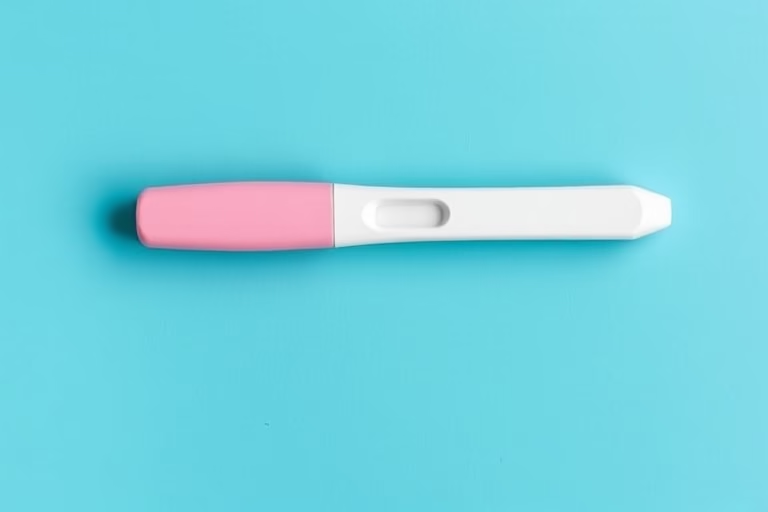Understanding Implantation Bleeding
Implantation bleeding occurs when a fertilized egg attaches itself to the uterine lining. This event usually takes place around six to twelve days after conception, which can be close to the time your regular menstrual period is expected. Many women may notice light spotting during this phase, leading them to wonder if this signifies pregnancy. It is crucial to understand that while implantation bleeding is generally lighter and shorter than a typical menstrual period, it can still cause confusion about whether a pregnancy test should be taken.
In most cases, implantation bleeding is a reliable early indicator of pregnancy. However, timing is essential when considering taking a pregnancy test. Testing too early might yield inaccurate results, creating doubt and confusion. By understanding the timing surrounding implantation bleeding and pregnancy tests, women can make informed decisions about their health.
When Does Implantation Bleeding Occur?
Understanding when implantation bleeding happens is key to discerning whether you should take a pregnancy test. This event generally occurs approximately one week after conception, often aligning with your expected period. Each woman’s cycle is unique, so some may experience this early sign of pregnancy sooner or later than others.
Knowing your menstrual cycle can help in identifying whether any bleeding you notice is implantation bleeding or an early period. Here are some key points to consider:
- Most women experience implantation bleeding 6 to 12 days post-ovulation.
- The bleeding often lasts anywhere from a few hours to a couple of days.
- Implantation bleeding is typically lighter, often pink or brown in color, compared to a regular period.
- Tracking your cycle can help highlight the timing of potential implantation bleeding.
How to Distinguish Between Implantation Bleeding and a Period?
Women may find it challenging to distinguish between implantation bleeding and their menstrual period due to similarities. Here are some differences that can help clarify the distinction:
Implantation bleeding typically:
- Occurs a few days to a week before a menstrual period is expected.
- Is much lighter in flow, often just spotting.
- Might be pink or brown rather than the typical bright red of menstrual flow.
- Usually lasts for a shorter duration, typically 1-3 days.
In contrast, menstrual bleeding usually:
- Begins with a heavier flow, typically bright red in color.
- Lasts longer, generally from 3 to 7 days.
- May have accompanying symptoms like cramps, bloating, or mood swings.
By paying attention to these details, women may better evaluate their unique situations and decide when to take a pregnancy test.
Timing for Pregnancy Test After Implantation Bleeding
After experiencing implantation bleeding, timing becomes crucial for taking a pregnancy test. It is generally recommended to wait at least 3 to 7 days after the bleeding to increase the likelihood of getting accurate results. Here are several considerations for women to keep in mind when deciding to take a pregnancy test:
1. **Sensitivity of the Pregnancy Test**: Home pregnancy tests vary in their sensitivity to the hormone human chorionic gonadotropin (hCG). Tests that claim to detect pregnancy a few days before a missed period can potentially yield accurate results sooner.
2. **Hormonal Levels**: After implantation, it takes time for hCG levels to rise significantly in the body. Testing too early may result in a false negative. Waiting allows for a higher chance of detecting adequate levels of the hormone.
3. **Follow-Up Tests**: If a test is taken early and returns a negative result, but pregnancy is still suspected, it’s wise to retest after about a week, ideally after a missed period for more accurate results.
Possible Symptoms of Early Pregnancy
Besides implantation bleeding, there are several early signs of pregnancy that women can watch for. Understanding these symptoms may help in recognizing whether a test should be conducted:
- Breast Changes: Tenderness, swelling, or darkening of the areolas can be common early signs.
- Fatigue: Many women report feeling unusually tired during early pregnancy due to shifts in hormone levels.
- Nausea: Known colloquially as morning sickness, this can occur at any time during the day and typically emerges around the sixth week.
- Frequent Urination: As hormonal changes occur, women may notice an increase in urinary frequency.
- Food Cravings or Aversions: Alterations in taste preferences often accompany early pregnancy.
Identifying these signs, alongside any unusual bleeding, can help women prepare for taking a pregnancy test at the right time.
Impact of Stress on Pregnancy Testing
Stress can significantly influence hormones in the body, potentially interfering with menstrual cycles and causing missed or delayed periods. Here’s how stress can affect pregnancy tests and interpretation:
1. **Hormonal Imbalance**: Stress can alter the body’s hormonal levels, resulting in irregular cycles, which can complicate the timing for taking a pregnancy test.
2. **Anxiety**: Women feeling anxious or stressed may misinterpret signs of pregnancy or bleeding, causing confusion about the best time to test.
3. **Physical Health**: Stress can impact overall health, affecting both the menstrual cycle and fertility. Prioritizing mental well-being can improve clarity regarding reproductive health.
Common Misconceptions About Implantation Bleeding
Myths surrounding implantation bleeding can mislead women and affect their decisions on testing. Here are some common misconceptions:
- Implantation Bleeding is Always Pink or Brown: Some women might experience red blood but still be pregnant. It can vary widely.
- Implantation Bleeding is the Only Early Indicator: While it is a sign, not all women experience this; hence, other symptoms should also be taken into account.
- Implantation Bleeding Guarantees Pregnancy: Just because bleeding occurred does not confirm pregnancy; a test will provide clarity.
Being informed can reduce anxiety related to potential misunderstanding of symptoms.
Final Thoughts
The journey of determining when to test for pregnancy after experiencing implantation bleeding can be complex. Understanding the nature of implantation bleeding and the importance of testing at the correct time is vital for clarity in pregnancy status. Paying attention to one’s menstrual cycle and symptoms can provide valuable insights. Symptoms such as breast tenderness, fatigue, nausea, and others can further clarify whether a pregnancy test is in order.
Consultation with a healthcare professional can also provide guidance tailored to individual circumstances, especially when there might be irregularities in cycles or symptoms.
Testing too early can lead to confusion and unnecessary doubts, while waiting allows for more accurate results. Therefore, timing, technique, and awareness of personal health are all essential components. Overall, knowledge about these factors plays a crucial role in having a healthy pregnancy journey.
Frequently Asked Questions
1. When is the best time to take a pregnancy test after implantation bleeding?
It is best to wait at least 3 to 7 days after the bleeding to maximize accuracy.
2. Can I become pregnant if I experience implantation bleeding?
Yes, implantation bleeding generally indicates that the fertilized egg has attached to the uterine lining, suggesting pregnancy.
3. What if the pregnancy test is negative after implantation bleeding?
If a pregnancy test returns negative but pregnancy is still suspected, retesting after a week can provide clarity.
4. Are there any dangers associated with implantation bleeding?
Implantation bleeding is generally harmless and an expected part of the early pregnancy process.
5. Can stress impact my ability to test accurately for pregnancy?
Yes, stress can alter hormonal levels, potentially delaying periods or causing confusion regarding pregnancy. Prioritizing self-care can help clarify any symptoms you are experiencing.
Further Reading
What Type of Psychotherapy Is Best for Anxiety?







